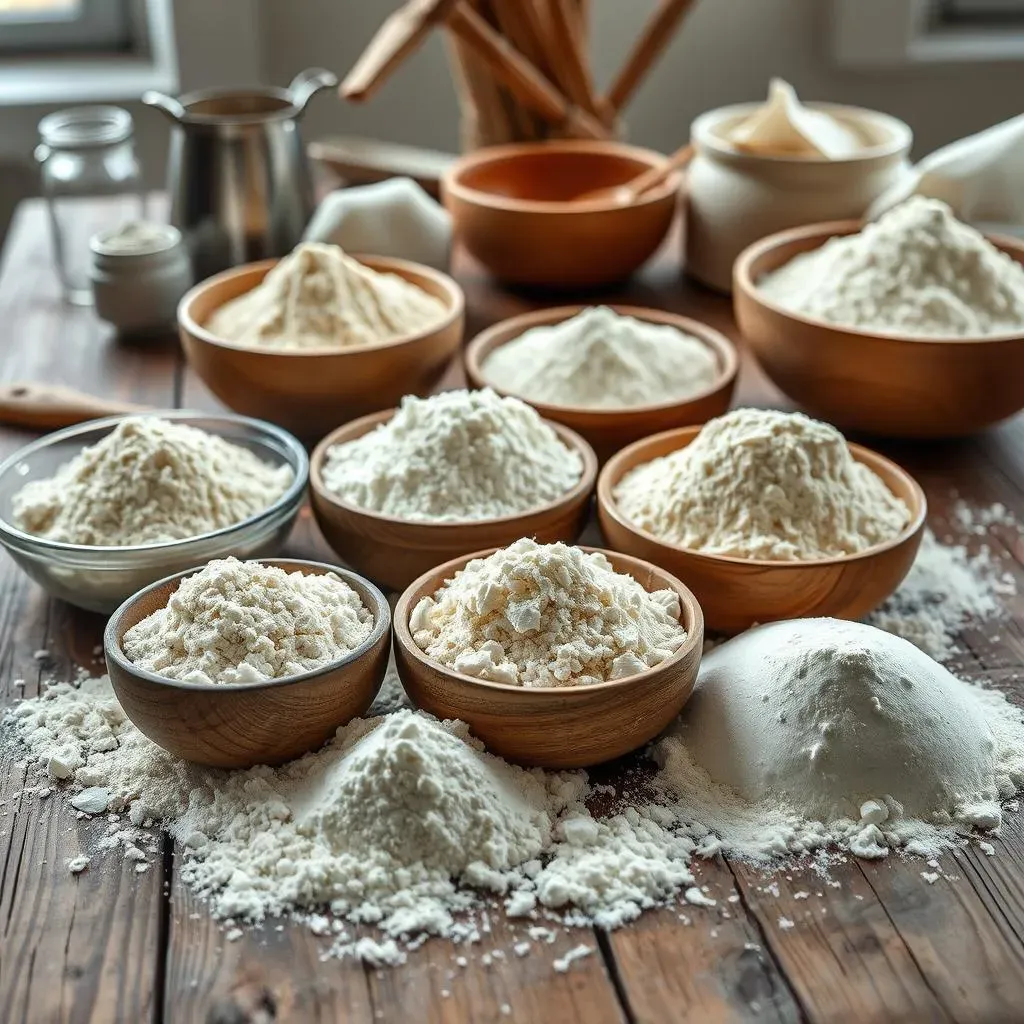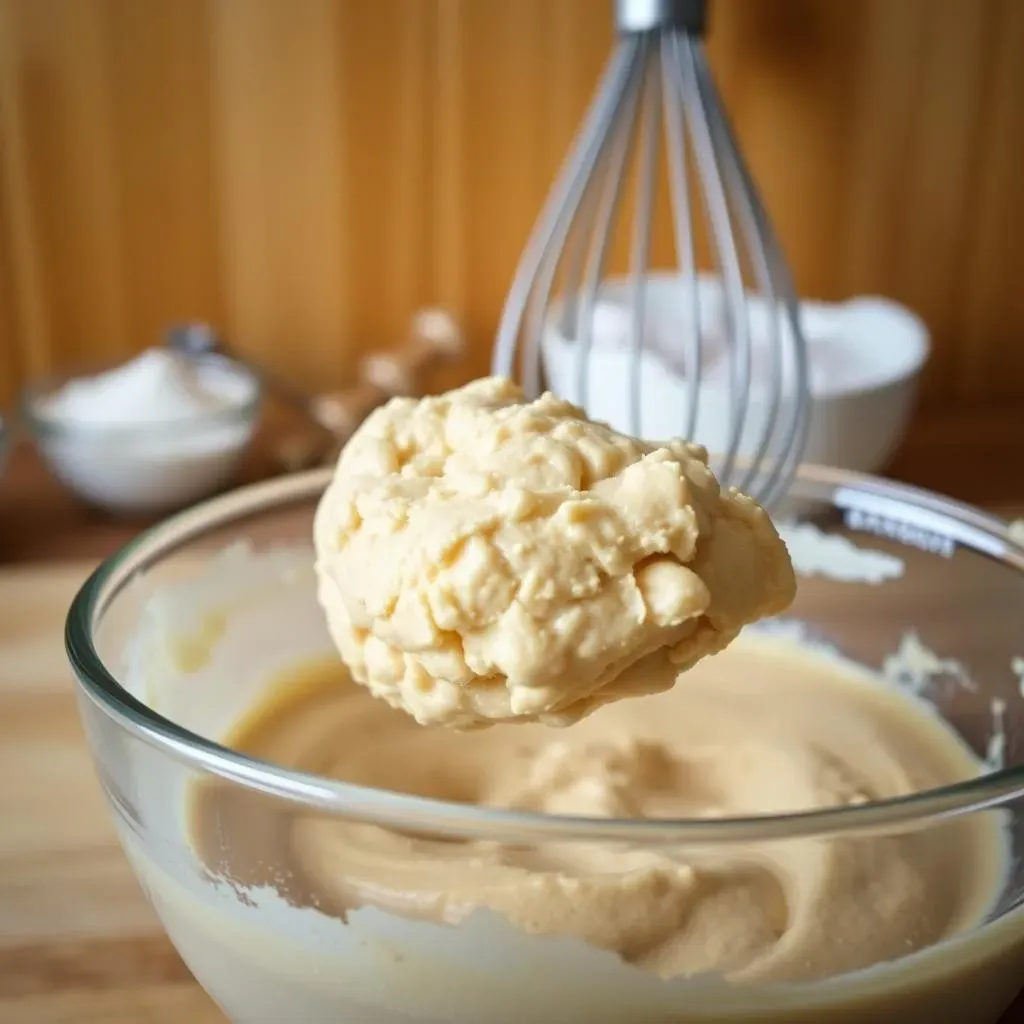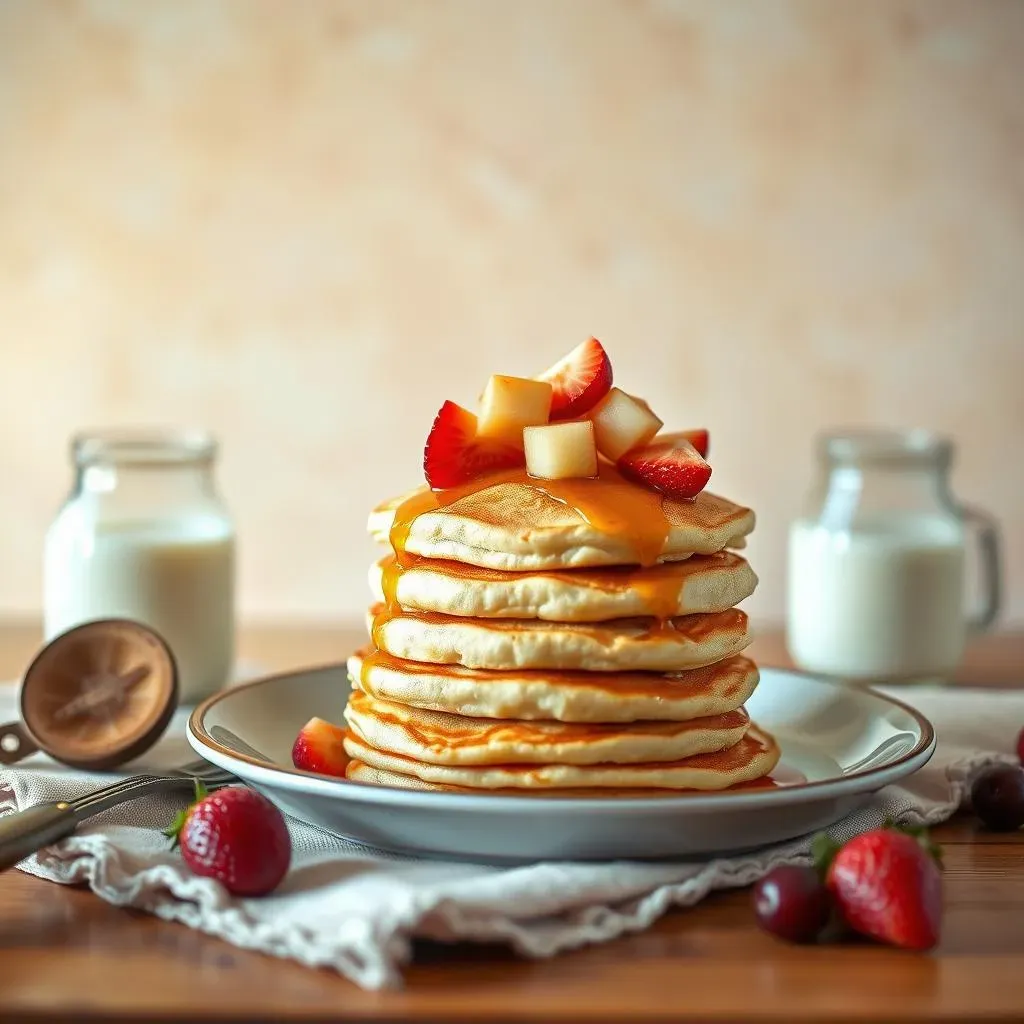Table of Contents
Ever craved a stack of fluffy pancakes but thought your dietary needs would hold you back? Well, get ready to flip that idea! This article is your guide to creating the most delicious, cloud-like gluten-free pancakes using plant-based milk. It's not just about swapping ingredients; it's about crafting a breakfast that's both satisfying and inclusive. We'll explore why going gluten-free and plant-based is a great choice, especially for those with sensitivities or dietary preferences. This isn't some complicated science experiment, I promise. We're talking simple, easy-to-follow steps that'll have you whipping up perfect pancakes in no time. So, whether you're a seasoned gluten-free pro or just starting your journey, let's dive into the world of the best "gluten-free pancake recipe with plant based milk" and make some magic in the kitchen. Get ready to learn the secrets to light and airy pancakes that everyone will love. This recipe is a game-changer, and I'm excited to share it with you.
Why GlutenFree and PlantBased?
Why GlutenFree and PlantBased?
Okay, so you're wondering about the whole gluten-free and plant-based thing, right? It's not just a fad, I promise! For many, going gluten-free is a necessity, not a choice. Think about people with celiac disease or gluten sensitivities; their bodies react badly to gluten, a protein found in wheat, barley, and rye. It can cause all sorts of unpleasantness, from tummy troubles to fatigue. So, for them, gluten-free isn’t a trend, it's a way to feel good. And then there's the plant-based side. This is where we swap out dairy milk for things like almond, soy, or oat milk. Why? Well, some folks are lactose intolerant, meaning they can't digest dairy properly, and others choose plant-based for ethical or environmental reasons.
But even if you don't have these specific needs, you might find that you just feel better when you cut back on gluten and dairy. I know I did! It's like my body finally said, "Thanks, I needed that break!". Plus, it opens up a whole new world of delicious ingredients and recipes. It's not about deprivation, it's about discovery. Like, have you ever tried a pancake made with oat flour? It's surprisingly good! And speaking of good, if you're new to this, you might want to check out this easy gluten-free pancake recipe, it's a great starting point.
Dietary Choice | Reason |
|---|---|
Gluten-Free | For those with celiac disease, gluten sensitivity, or personal preference. |
Plant-Based | For those with lactose intolerance, ethical reasons, or environmental concerns. |
It’s also about expanding your culinary horizons. I mean, how many times have you had the same old pancake recipe with the same old ingredients? Going gluten-free and plant-based forces you to get creative, to experiment, and you often end up finding some fantastic new favorites. It's like giving your taste buds a little adventure. For example, using almond flour can create a wonderfully nutty flavor. If you are curious about that, here is fluffy pancake recipe using almond flour.
Ultimately, it's about making choices that align with your body and your values. You don't have to go 100% either. Maybe you start by swapping out dairy milk, or maybe you try gluten-free pancakes once a week. It's all about finding what works best for you. And who knows, you might just discover that these gluten-free plant-based pancakes are your new go-to breakfast. I’m telling you, they are so good!
The Magic of GlutenFree Flours
The Magic of GlutenFree Flours
Okay, so let's talk about the real heroes of this recipe: gluten-free flours. If you're new to this, it might seem a bit confusing, but trust me, it's not rocket science. The thing is, wheat flour has gluten, which is what gives traditional pancakes their structure and that slightly chewy texture. Since we're ditching the gluten, we need to find other ways to achieve that same fluffiness and hold-together-ness. That's where the magic happens. We're not just using one flour here, we're creating a blend, and that's key.
Think of it like building a team. Each flour brings its own unique talent to the table. Brown rice flour is like the dependable teammate, providing a good base. Potato starch is the one that helps to make things light and airy. And tapioca starch? That’s our secret weapon for binding everything together and creating a smooth texture. It's like the glue that holds the team together, making sure that our pancakes don't fall apart. These flours, when mixed just right, can make pancakes that are indistinguishable from their gluten-filled cousins. For those who want to explore more options, this gluten-free pancake recipe with a blend of flours might be right for you.
Flour | Role in Pancakes |
|---|---|
Brown Rice Flour | Provides a good base and structure. |
Potato Starch | Adds lightness and airiness. |
Tapioca Starch | Binds ingredients and creates a smooth texture. |
Now, you might be thinking, "Can't I just use one gluten-free flour?" Well, you could, but you might not get the best results. Using a blend gives us a more balanced flavor and texture. It's like having a well-rounded group of friends; everyone brings something different to the party. For example, using only coconut flour might give you a dense, almost cake-like pancake, while oat flour can make them slightly chewy. It's all about that perfect balance. If you are curious about that, here is gluten-free pancake recipe with coconut flour.
Don't worry too much about being exact with the measurements at first. As you get more comfortable, you can experiment with different ratios to find what you like best. The key is to start with a good base and then tweak it to your preference. And remember, it's okay to make mistakes. That's how you learn! Plus, even a slightly wonky pancake is still delicious with the right toppings.
Making the Batter: Tips and Tricks
Making the Batter: Tips and Tricks
Alright, let's get down to the nitty-gritty: making the batter. This is where things can get a little tricky, but don't worry, I've got your back. First things first, you'll want to whisk together all your dry ingredients – that's your brown rice flour, potato starch, tapioca starch, and a pinch of salt. Get them all cozy and mixed up in a bowl. This ensures that everything is evenly distributed, and you won't get a random clump of starch in your pancake. Trust me, nobody wants that.
Next up, the wet ingredients. In a separate bowl, combine your plant-based milk (I usually go with unsweetened almond milk), applesauce, vanilla extract, and a touch of maple syrup for sweetness. Whisk it all together until it's nice and smooth. Now, here's a key tip: don't overmix! Just gently fold the wet ingredients into the dry until everything is just combined. A few lumps are okay; overmixing can lead to tough pancakes, and we want them light and fluffy. It's like you are trying to be gentle with a new born baby. If you want a quick guide, check this gluten-free pancake recipe for a quick breakfast out.
- Dry Ingredients: Whisk together flours and salt.
- Wet Ingredients: Combine milk, applesauce, vanilla, and maple syrup.
- Mixing: Gently fold wet into dry until just combined.
- Lumps: A few lumps are okay, don't overmix.
Now, let the batter rest for about 5-10 minutes. This gives the starches a chance to absorb the liquid, resulting in a fluffier pancake. It's like letting your dough take a little nap before baking. During this time, you can get your griddle or pan heated up and ready to go. I like to use a non-stick pan with a little bit of coconut oil or vegan butter to prevent sticking. You can also use a griddle if you have one. The key is to have a medium heat. Too high, and your pancakes will burn on the outside while still being raw on the inside. Too low, and they will be flat and sad.
And hey, if you are in the mood for something special, you can always add some extras to the batter. Chocolate chips are always a win, or you can throw in some blueberries or a dash of cinnamon. It's your pancake canvas, so get creative! But remember, don't add too much, or you may end up with a soggy mess. If you want to add some protein to your pancake, check this gluten-free pancake recipe with protein powder out.
"The secret to great pancakes is in the batter: don't overmix and let it rest!" - Some wise pancake lover.
Cooking and Serving Your Pancakes
Cooking and Serving Your Pancakes
The Art of Cooking
Okay, so your batter is ready, your pan is hot, now what? It's time to cook these beauties. Pour about 1/4 cup of batter onto your hot griddle or pan. You'll want to cook them on medium heat, just like we talked about, and you'll know it's time to flip when you see little bubbles forming on the surface and the edges start to look set. It's like they're telling you, "Hey, I'm ready for my close-up!". Don't rush it; let them cook properly. This is where patience is key, and trust me, it's worth it. If you flip them too early, you'll end up with a mess, and no one wants that.
Once you flip, cook the other side for another couple of minutes until it’s golden brown. You want that nice, even color, not burnt spots. It's like you are tanning a perfect pancake. If you're unsure, you can always lift the edge a little to peek at the color. Once they are done, transfer them to a plate and keep them warm while you cook the rest of your batter. I usually put them in a low oven, just to keep them warm. And hey, if you are looking for a recipe that is even more simple, check out this easy gluten-free recipe.
"Patience is a virtue, especially when making pancakes." - Someone who loves breakfast.
Now, you might be wondering, "What if my pancakes are sticking?" Well, make sure your pan is properly heated and that you're using enough oil or vegan butter. You can also try using a lower heat. If your pancakes are still sticking, you might need to adjust the amount of liquid in your batter. If they are too thick, add a little more milk. If they are too thin, add a little more flour. It's all about finding that perfect consistency. It's like tuning an instrument; you need to tweak it until it sounds just right. And of course, using a good quality non-stick pan can make a huge difference.
And what about those first few pancakes that don't quite turn out? Don't worry, that's totally normal. They are the tester pancakes. Consider them your sacrifice to the pancake gods. They might not be the prettiest, but they are still delicious. And hey, if you want to try something different, you can try using rice flour, here is recipe using rice flour.
Serving Suggestions
Okay, your pancakes are cooked, they're golden, they're fluffy, now it's time for the best part: toppings! This is where you can really let your creativity shine. Classic maple syrup is always a winner, but don't be afraid to think outside the box. Fresh berries are fantastic, and they add a nice pop of color and flavor. You can also try a homemade chia jam; it's super easy to make and it's packed with nutrients. And if you're feeling fancy, a dollop of vegan whipped cream is always a nice touch.
If you want a little extra sweetness, you can drizzle some honey or agave nectar over the top. You can also add some chopped nuts for a bit of crunch. And if you're a chocolate lover, don't be shy about adding some chocolate chips or a drizzle of chocolate sauce. It's your pancake party, so go wild! And remember, you can always make this recipe for someone with celiac disease, check out this best recipe for celiac.
Toppings | Why they are great |
|---|---|
Maple Syrup | Classic and always delicious. |
Fresh Berries | Adds color, flavor, and nutrients. |
Chia Jam | Easy to make, nutrient-packed. |
Vegan Whipped Cream | A touch of decadence. |
Don’t forget about the presentation, either. A little sprinkle of powdered sugar or a few fresh mint leaves can make your pancakes look like they came straight out of a magazine. It's like dressing up for a special occasion, except the occasion is breakfast. And if you're serving these to kids, you can get creative with fun shapes and faces using fruit. It's a great way to make breakfast more engaging for everyone.
Ultimately, the best way to serve your pancakes is with love, a good cup of coffee or tea, and maybe some good company. It's about creating a moment of joy, and these pancakes are the perfect way to do just that. And if you are looking to make these for a special occasion, check out this gluten-free recipe for special occasions.
The Final Flip: Enjoying Your Plant-Based Gluten-Free Pancakes
So, there you have it – a simple, delicious, and totally doable gluten-free pancake recipe with plant-based milk. We've walked through the why, the how, and now it's time for the best part: enjoying the fruits (or pancakes) of your labor. Remember, cooking should be fun. Don't stress about perfection; each batch will teach you something new. Whether you're making these for a quick weekday breakfast or a leisurely weekend brunch, these pancakes are sure to please. The best part is how adaptable they are. Feel free to experiment with different flours, milks, and toppings to make them your own. And if you're looking for more breakfast ideas, why not check out our easy gluten-free pancake recipe for beginners? Or maybe you want to try a fluffy gluten-free pancake recipe using almond flour. The possibilities are endless. So go ahead, make a stack, and share the joy of good food with the people you love. Happy flipping!
